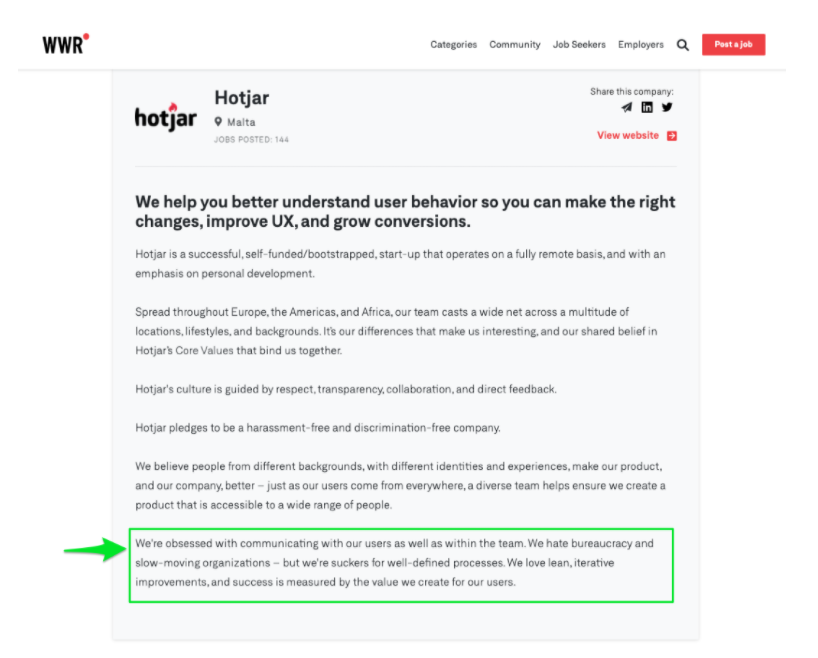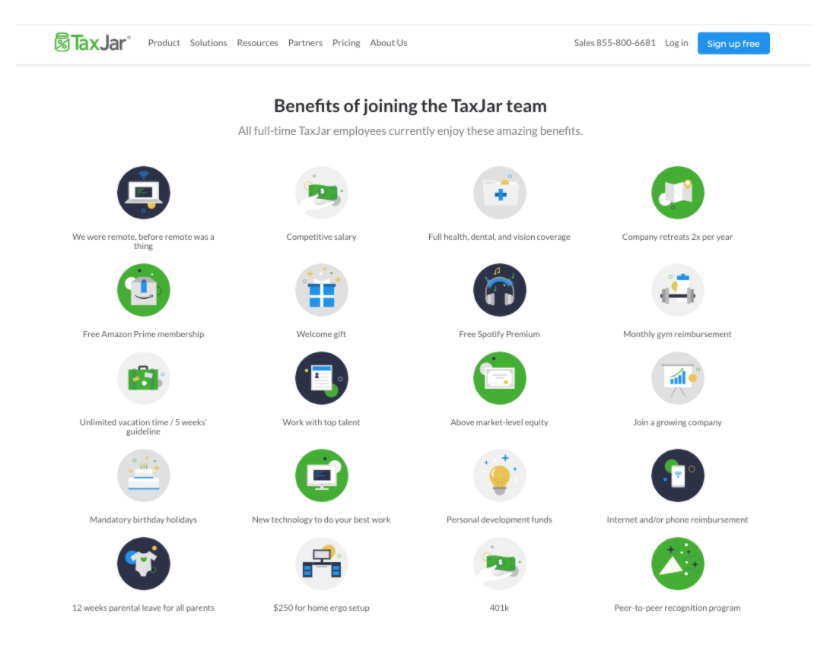7 Best Hiring Practices That Successful Remote Companies Do (With Examples)
Their remote hiring best practices recruit stellar candidates worldwide in less time. So shouldn’t your remote company use these best hiring practices too?

Have you ever wondered how the top remote companies always manage to recruit the best candidates from around the world without breaking a sweat?
After all, if you’ve ever tried to hire new remote employees, you know it can take several hours of sleuthing every day -- for weeks or even months at a time -- until you find the perfect candidate for your position.
Since you literally have access to candidates all over the world, you’re likely to get inundated with hundreds of applicants. Some will be more than qualified, whereas others shouldn’t have even applied.
But the top remote companies don’t have time to sift through a massive stack of resumes just to find that one gem in their digital haystack. Instead, they use the ol’ work smarter, not harder strategy.
Lucky for you, we’re about to share their remote hiring best practices so you can do the same.
Here’s What the Top Remote Companies Do Differently When It Comes to Hiring Remotely
Creating an unstoppable, motivated remote team is their secret sauce to success, and it could be just the thing your company needs to skyrocket to greatness too.
So here’s what they do and don’t do during the remote hiring process:
They Don’t Wait to “Hire When It Hurts”
One of the biggest mistakes you can make is what’s known as “hiring when it hurts.”
This is when you wait until the absolute last minute to add someone to your team who you desperately needed a few weeks or months earlier.
When this happens, your team usually ends up rushing the process and quickly choosing a candidate who is not the right fit. In a few weeks when you realize this error, you’ll be forced back to the drawing board to kick off recruitment all over again.
This costly mistake wastes your company’s time, money, and resources. It often causes hiccups in your operation (leading to more potential waste) too.
Because it can take an average of 42 days to hire someone, you need to stack your candidate pipeline far earlier than you need, as the top remote companies do.
Your team can do this by adding a link to your Careers page welcoming resumes regardless of open positions. If you like any that come in, network and connect with them, and say they’ll be the first to know when a role becomes available.
They Know What They Want Before They Post a Remote Job Ad
You should know precisely what you’re looking for in a candidate long before posting your job ad, such as their qualifications, experience, and fit with your company culture.
But there’s more to the story than that.
You should also think about the exact outcomes you hope to achieve with this new candidate in their first three, six, and 12 months.
Consider the responsibilities this will involve, the specific KPIs and goals you want to hit, the core competencies and traits needed to get the job done, and what timezone you may need someone to work/be available in.
By looking ahead like this, you can paint a much clearer picture of who you’re looking for.
Then your team can craft a job ad that draws in a candidate who checks all of these boxes (and more!). It may also dissuade others who aren’t the right fit from flooding your inbox (and potentially wasting your time).
They Spend More Time Creating the Perfect Job Ad and Packing It With Personality
We get it; you ideally wanted to hire your next remote team member a few months ago, and now you may be stuck scrambling.
But that doesn’t mean you should race through your job ad just to get it up and attracting resumes. Do this, and you’ll likely have a daunting stack of applicants who really don’t fit the bill.
So rather than rushing through your job ad because you’re desperate, it pays to slow down and get this right. Nail down all the specifics you thought about in our previous tip.
As you do this, it’s also a smart idea to spend time weaving in your company’s personality. This best practice shows people why they’d want to work for your team, allowing you to lure in high-quality candidates who can’t wait to apply.
Here’s how two of the top remote companies do this well:

In the example above, Hotjar tells candidates what they do, what they’re obsessed with, and what they hate. They hope this rundown resonates with candidates who think the same.

And Toptal LLC makes a bold statement about exactly the type of person they’re looking for in the second example above.
So what would pique the interest of your ideal candidate? Add this to your remote job ad, and you’ll start weeding out bad fits while getting closer to finding the right candidates before you receive a single resume.
They Create Supporting Website Pages to Showcase the Benefits of Working There
Building out supporting pages on your website can do the heavy lifting of promoting your remote work environment and company culture for you.
Similar to sales pages, career and company pages prove why candidates should consider joining your team. They give visitors a peek into what your company’s all about, how it gives back to the community, and how your employee benefits compare.
These points will all draw in top candidates who will feel excited to apply and lucky to work for you.
Check out this example showcasing the benefits of joining this top remote company:

Though you may not have the same perks to offer, you should highlight what your current employees love most about working for your team to emulate this best practice.
You’ll find some other key ingredients to add to these pages next:
They Also Promote Their Values, Mission, and Inclusivity Right From the Start
Your company’s values and mission should be clearly displayed on your career pages and in your job ad.
You want to connect with candidates who believe and resonate with these (and simultaneously weed out those who don’t). But you’ll have a harder time finding candidates who check this box if you don’t lay it all out there.
Here’s a great example of how to get this right:

Top remote company Clevertech has a 5-point mini-presentation about what employees score when they onboard with their team, making applying irresistible.
Your company should also emphasize its commitment to being a diverse and inclusive workplace. Be sure to mention this, so people from all walks of life feel welcome and encouraged to apply.


The two examples above give your team a super simple way to do this, and it only takes a few lines to create a lasting impact.
They Carefully Consider Where They Source Remote Candidates
Let’s say your company has all these pieces in place. If you’re not sourcing from the right talent pool and post your remote job on traditional job boards, all your time and hard work could be wasted.
These mega job boards aren’t where candidates who are already experienced and familiar with this style of work look for new opportunities.
Instead, you’ll likely find candidates you’ll need to spend time training and getting up to speed. Worse, your new hires may eventually feel that remote work isn’t the right fit, wasting more of your time and money.
A much better approach, and one that almost all the top remote companies use, is going straight to remote-specific job boards to post positions.
Following this strategy helps your hiring team tap into a talent pool of expert-level remote workers and narrows down how many qualified applicants will apply.
You can say goodbye to the flood of job candidates who think they can work remotely and hello to those who can get up and running ASAP. This can then help your team catch up much faster.
They Create a Multi-Layered Interview Process to Quickly Oust the Wrong Fits
Lastly, the top remote companies take advantage of interview processes that strategically knock out less-than-ideal candidates long before they need to review the giant stack of applicants personally.
This can be as simple as adding specific instructions to your job ad -- such as including the phrase “Red Panda” somewhere -- to disqualify people who don’t follow directions.
Another wise option: utilizing applicant tracking software. You can set these tools to look for specific keywords in resumes before you have to read them. Resumes containing the right mix will get routed to one folder, while those that lack them will go elsewhere.
These two strategies will reduce your time sifting through a daunting mountain of resumes. You can then move onto phone screening interviews and paid tests to get a feel for whether your whittled-down stack of potential hires can actually handle the position’s workload.
Final Thoughts on The Best Hiring Practices for Remote Companies
While these seven steps may seem like extra work on the front-end, they’ll pay dividends later on. Do the heavy lifting now, and your hiring team won’t have to deal with high turnover rates and wasted training hours down the road.
This is exactly what the top remote companies do and why they’re able to source high-quality candidates at the speed of light.
Now that you know their best-kept secrets, all that’s left to do is take action. Use this guide as a roadmap, and you’ll have no trouble attracting qualified candidates who are happy to work with you long-term.
Then, make sure to subscribe to the newsletter at https://itjobsfromhome.com to stay updated with the latest job opportunities.